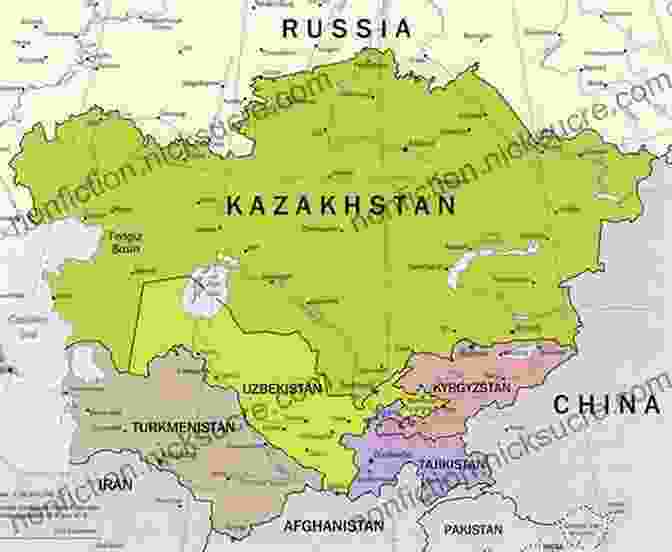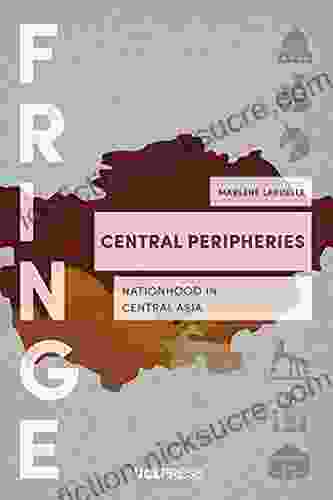
4.6 out of 5
| Language | : | English |
| File size | : | 1190 KB |
| Text-to-Speech | : | Enabled |
| Screen Reader | : | Supported |
| Enhanced typesetting | : | Enabled |
| Print length | : | 314 pages |
Central Asia is a region of captivating contrasts, where the weight of history collides with the promise of modernity. From the sun-drenched deserts of Turkmenistan to the towering mountains of Kyrgyzstan, this vast expanse has been shaped by millennia of cultural exchange, political upheaval, and geopolitical intrigue.
In the aftermath of the Soviet Union's collapse, the five newly independent republics of Central Asia - Uzbekistan, Kazakhstan, Kyrgyzstan, Tajikistan, and Turkmenistan - embarked on a complex journey of nation-building. Stripped of Moscow's guiding hand, these nascent states were left to grapple with the challenges of forging new identities, establishing stable political systems, and navigating an uncertain international landscape.
The Legacy of Empire
The legacy of imperial rule cast a long shadow over the development of Central Asia. For centuries, the region was a crossroads of empires, contested by Persian, Arab, Chinese, and Russian forces. Each empire left its imprint on the region's culture, language, and political structures.
During the 19th century, Central Asia was incorporated into the Russian Empire, a period that had a profound impact on the region's political and economic development. Russian colonial policies introduced new administrative systems, encouraged Russian settlement, and marginalized indigenous languages and cultures.
The Soviet Era
The Russian Revolution of 1917 and the subsequent establishment of the Soviet Union ushered in a new era for Central Asia. Under Soviet rule, the region was transformed into a major economic powerhouse, with a focus on industrial development and agricultural collectivization.
The Soviet Union also played a significant role in promoting national consciousness among the different ethnic groups of Central Asia. National republics were established, each with its own language, culture, and political institutions. However, these republics remained firmly within the Soviet orbit, subject to centralized control from Moscow.
Post-Soviet Independence
The collapse of the Soviet Union in 1991 ushered in a period of profound uncertainty and transformation for Central Asia. The newly independent republics faced the daunting task of building democratic institutions, establishing sovereign economies, and defining their roles in the international community.
In the early years of independence, there was a surge of enthusiasm for national self-determination. National languages were revived, traditional customs were celebrated, and new political parties emerged. However, this initial euphoria was soon tempered by economic difficulties, political instability, and ethnic tensions.
Nation-Building Challenges
The process of nation-building in Central Asia has been a complex and challenging endeavor. The region's diverse ethnic and linguistic composition, combined with its legacy of imperial rule, has made it difficult to forge a cohesive national identity.
In some cases, ethnic nationalism has fueled conflicts and divisions. In other cases, authoritarian governments have suppressed dissent and limited political freedoms, undermining the development of democratic institutions.
Economic challenges have also hampered the development of the Central Asian states. The region's economies are heavily dependent on the export of natural resources, making them vulnerable to fluctuations in global commodity prices. Corruption and mismanagement have further hindered economic growth.
Geopolitical Dynamics
The geopolitical position of Central Asia has also played a significant role in shaping its post-Soviet development. The region is bordered by Russia, China, Iran, Afghanistan, and Pakistan, making it a key strategic crossroads.
In recent years, Central Asia has become increasingly important for major powers seeking to secure their interests in the region. Russia, China, and the United States have all competed for influence, leading to a complex geopolitical rivalry.
Central Asia is a region of rich history, complex identities, and ongoing challenges. The post-Soviet era has been a time of both progress and setbacks, as the region seeks to forge its own path in the globalized world.
Despite the challenges it faces, Central Asia has the potential to become a vibrant and prosperous region. By embracing its diversity, strengthening its economies, and cooperating with its neighbors, the Central Asian nations can build a future that honors their past and secures their future.


























































































































































































































































































































































































































































































































































































